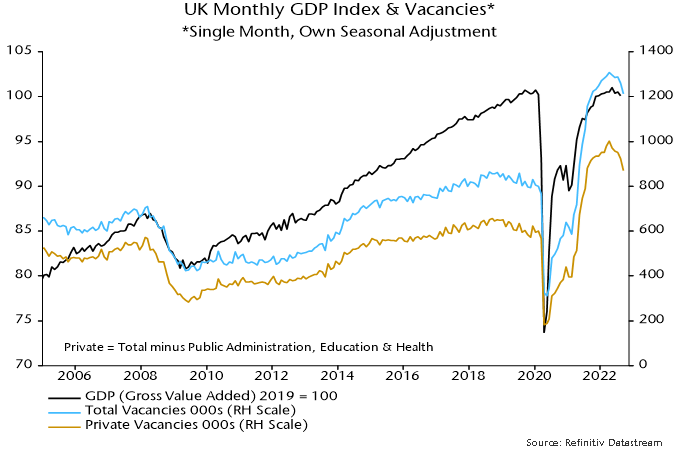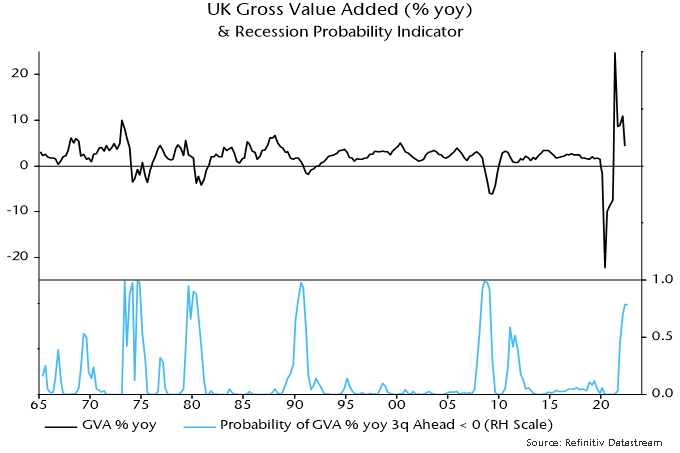UK recession gathering pace at end-Q3

A “monetarist” UK recession probability model used here signalled a 70% likelihood of a recession in 2022 back in March. Coincident data suggest that contraction began in the summer. The model now indicates that the recession will last through Q2 2023, at least.
Monthly GDP figures have been affected by holiday distortions and are often revised significantly but current data show a peak in May and a 0.9% drop by August.
Employment is a lagging indicator so further growth in the PAYE jobs measure (also subject to large revisions) through September does not preclude a recession having begun*. Job vacancies, by contrast, are coincident. The ONS vacancies series peaked in May, falling steadily through September.
The published ONS series is a three-month moving average but single-month numbers are available on a non-seasonally-adjusted basis, to which an adjustment procedure can be applied. The resulting total vacancies series peaked in April, falling modestly through July before plunging in August / September– see chart 1. The suggestion is that economic conditions worsened sharply at the end of Q3.
Chart 1

The decline in total vacancies reflects a larger fall in private sector openings, which were down by 13% in September from a May peak, offset by a further rise in the public sector driven by health and social care.
The official vacancies numbers are from a survey of employers but the ONS also compiles weekly indices of online job adverts from data supplied by Adzuna. These indices have a short history and are not seasonally adjusted but the year-on-year change in total job adverts mirrors that of total vacancies – chart 2.
Chart 2

Inputs to the recession probability model include real money measures, interest rates, credit spreads, share prices, house prices and the effective exchange rate – see previous post for more details. The model looks out three quarters and the probability estimate stood at 79% at end-Q3, suggesting that the economy will still be in recession in Q2 2023 – chart 3.
Chart 3

House price strength was a moderating influence on the model reading until recently but coming weakness may contribute to the probability estimate remaining in recession territory.
*The Labour Force Survey measure of employees in employment fell between May and July but recovered in August.
These are the views of the author at the time of publication and may differ from the views of other individuals/teams at Janus Henderson Investors. References made to individual securities do not constitute a recommendation to buy, sell or hold any security, investment strategy or market sector, and should not be assumed to be profitable. Janus Henderson Investors, its affiliated advisor, or its employees, may have a position in the securities mentioned.
Past performance does not predict future returns. The value of an investment and the income from it can fall as well as rise and you may not get back the amount originally invested.
The information in this article does not qualify as an investment recommendation.
Marketing Communication.
